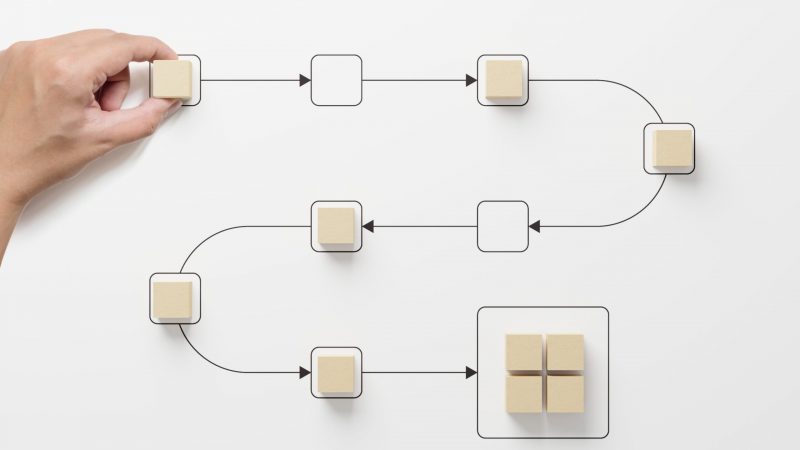Does your organization have a well-thought-out finance tech stack?
You should—because chances are your competitors already do.
According to this year’s PwC Pulse Survey, 49% of CFOs and 60% of all executives believe digital transformation initiatives will be key to growth in 2022.
Organizations are racing to not just digitize, but to drastically streamline and integrate finance procedures, using everything from cloud migration and predictive analytics to AI and intelligent automation.
Considering how quickly the market is evolving, it’s more important than ever to invest in technological solutions that will both fulfill your current needs and support future growth.
There’s certainly no shortage of options. For every finance function, there’s a dozen corresponding finance technology solutions, and it’s up to you to figure out which one will work best.
Here’s how to build a finance tech stack that’s right for you.
Why Your Finance Tech Stack Matters More Than You Think
The COVID pandemic resulted in a significant change in how finance teams operate, and the changes are here to stay.
Think about the recent evolution of distributed work. Along with it came a greater emphasis on compliance and data security as well as the need for remote and mobile access.
And then there was the Great Resignation, the lack of qualified workers and the need for alternatives to the overreliance on manual processes that characterized much of finance operations in the past.
You asked and tech vendors delivered.
Gone are the days when the most important financial procedures were controlled by a small number of very large IT companies. There has been a significant development in the software-as-a-service (SaaS) industry in recent years, and there are many possibilities for finance technology.
The issue is that there are so many options that it can be difficult to know where to begin. If you want to create a finance tech stack that works for you, you must stay on top of the IT market, the newest technologies, and your organization’s needs.
Otherwise, you risk more than just purchasing the wrong financial tools. There’s a real chance you’ll fall behind the technology curve—and your competitors.
What’s in a Modern Tech Stack?
There is no one-size-fits-all solution, but a good finance tech stack usually consists of the following:
- Accounting enterprise resource planning (ERP) software: Tracks financial transactions and generates up-to-date financial reports and analyses.
- Accounts payable (AP) software: Tracks invoices, automates approval and streamlines payments.
- Accounts receivable (AR) software: Automates invoicing and payment collection and manages cash inflow.
- Payroll software: Manages employee salaries, bonuses, benefits and tax payments.
- Expense management software: Tracks, approves and reimburses employee expenses, applying reimbursement rules.
- Spend management software: Monitors and controls spending beyond basic accounting systems, often integrating directly with ERP or AP tools.
Increase Agility With FP&A Software
The majority of ERP solutions were built to collect data, not report on it. You can complete your regular financial reporting using the built-in accounting features in your ERP, but it will take time – time that could be spent on analysis rather than data processing. Your life will be much easier if you incorporate a specialized financial planning and analysis (FP&A) solution into your tech stack.
Because most ERPs’ native accounting tools lack agility, completing your regular reporting requires manually pulling data from the ERP into static Excel spreadsheets. This often necessitates the assistance of IT, as well as working with numbers that are already out of date by the time they are loaded and formatted in your spreadsheet. It is a time-consuming and tedious process that frequently keeps your team from concentrating on the in-depth analysis and strategic advice that your company depends on you to deliver.
FP&A software is far more agile, pulling live data from your ERP for real-time financial and operational reporting. Datarails in particular works directly in Excel, allowing you to eliminate manual processes and enable efficient reporting across multiple data sources for shorter month-ends and faster refreshes with ad hoc inquiries and drill downs.
How To Pick a Finance Stack for Your Organization
Here are some key things to look for when shopping for a finance technology stack:
1. Compliance
Regulatory compliance comes first. Your fintech solutions must comply with all applicable tax, legal and audit requirements. Things to watch out for include digital audit trails and compatibility with data protection legislation such as GDPR, CCPA and KYC/AML compliance.
2. Integrations
Do the new solutions integrate with your existing fintech and other tools such as CRM systems and internal databases? If not, how simple will it be for them to connect, and how long will it take to train staff to use them? A tech stack is only beneficial if you can use the various tools together.
3. Automation
Automation reduces human error while saving time and money. You want to invest in solutions that automate and replace as many manual processes as possible without compromising quality and security.
4. Security
Security is another major consideration. Look for built-in protection such as multi-factor authentication, encryption, security audits, PCI compliance, etc.
5. Remote Access
A staggering 4.32 billion people used mobile internet in 2021. This means two things. One is that over 90% of people worldwide use a mobile device to go online. And two is that your tech stack must be fully mobile responsive and accessible remotely, preferably via the cloud.
6. Ease of Use
The best finance tech stacks are user friendly. Quick onboarding and a low learning curve are telltale signs, as are features that make it simple for remote teams to use the stack’s components, such as low-code and no-code functionalities.
7. Scalability
Your tools should grow with you. Verify with vendors that solutions can scale up or down and manage high transaction volumes fast. You should also be able to add new functionalities as needed.
8. Data Analytics
An essential part of any modern financial system is data analytics (DA). It’s also one of the challenging aspects of building a successful fintech stack. A good solution should provide real-time data insights and visualization to enable strategic planning.
9. Cost
Cost is always a concern. There’s also the question of whether to invest in a full-stack solution or acquire piecemeal software. Your budget and operational needs will play a significant role in the optimal option for you.
10. Support
Lastly, check whether the fintech vendors offer 24/7 customer support. Some will even provide specialist onboarding and support teams, which can be a lifesaver if you’re new to that software.
Assess Your Needs & Stack Additional Tech as Appropriate
As you grow and scale, you may find that your financial technology stack needs to grow as well. When deciding on the next solutions to add to your stack, consider your pain points. From data analytics to disclosure management to tax reporting, when your organization has a function that isn’t scaling with the rest of the business, there are solutions to help get every function growing at the same pace.
Financial technology, when researched and applied, can provide your organization with the tools it needs to improve the speed, efficiency, and strategic function of your financial operations and data. Understanding your company’s needs and using technologies that can adjust to match those needs can help you



